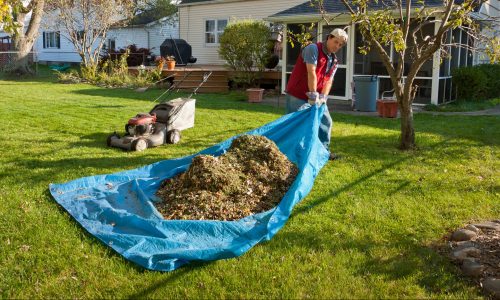The Best Leaf Blower

Our Review Process
Don't Waste Your Money is focused on helping you make the best purchasing decision. Our team of experts spends hundreds of hours analyzing, testing, and researching products so you don't have to. Learn more.
Our Picks For The Top Leaf Blowers
- 1. SnapFresh Turbo Engine Ergonomic Leaf Blower
- 2. Sun Joe SBJ601E Lightweight Corded Leaf Blower
- 3. DEWALT Battery Powered Ergonomic Leaf Blower
- 4. BLACK+DECKER Corded Lightweight Leaf Blower
- 5. Somorei Compact Copper Motor Leaf Blower
- 6. Greenworks Variable Speed Cordless Leaf Blower
- 7. KIMO Portable Vacuum & Leaf Blower
- 8. BLACK+DECKER Disposable Leaf Bag Leaf Blower
- 9. Husqvarna Gas Powered Padded Harness Leaf Blower
- 10. Worx Corded 2-Speed Leaf Blower
- 11. Toro UltraPlus Corded Electric Leaf Blower
- 12. Greenworks Mulching Long-Lasting Leaf Blower
- 13. Sun Joe Fast Shredding Leaf Blower
- 14. Echo Professional Quiet Leaf Blower
- 15. Remington Quick Start Electric Leaf Blower
Although this leaf blower is battery operated, it only takes 1 hour to fully charge. Homeowners will then be able to use the leaf blower for a full 30 minutes before recharging. The unit is compact; however, it's still able to blow everything from dust to snow with ease.
No WiresOne of the most lightweight leaf blowers on the market, this model comes in at just 2.2 pounds.
Weighing just 4 pounds, this leaf blower is an excellent choice for teens who are helping mom and dad with the yard work. The unit is beginner friendly and offers just two speeds to choose from. It works best when used to clear leaves and debris from sidewalks, back decks and driveways.
Easy to HoldThis leaf blower has a maximum air speed of up to 215 miles per hour.
Fall clean up is a breeze when you have this leaf blower on hand. It's lightweight and easy to maneuver and features power control in the form of a variable trigger and speed lock. It also runs much more quietly than other models, which is important if you have neighbors in close proximately to your home.
Rechargeable BatteryYou'll enjoy up to 87 minutes of run time on one charge when you go with this leaf blower.
Make quick work of fall gardening chores with this leaf blower. It's lightweight, has a powerful motor and moves leaves at speeds of up to 180 miles per hour. If you're interested in a bundle, you can also order this leaf blower with a pair of safety glasses, gloves, a gutter attachment or a leaf collection bin.
Economical OptionThe low price tag on this leaf blower makes it affordable for most.
Buying Guide
If you’ve ever lived on a lot with plenty of trees, you know how challenging leaf cleanup can be. Sure, you can comb your yard with a rake, but that’s both a labor-intensive and time-consuming effort. With a leaf blower, you can send large piles of leaves in the same direction, where you can later recycle them and keep your yard clean.
But buying a leaf blower comes with its own challenges. You’ll immediately find that you have a choice between gas, corded electric or battery-powered blowers, each with its own benefits. A gas-powered leaf blower is typically more powerful, which means you’ll be able to clear away more leaves in a shorter timeframe. However, corded leaf blowers have made great advancements in recent years, bringing their own impressive power. Battery-powered leaf blowers also still fall behind their gas counterparts.
There are some downsides to all three options. Gas-powered leaf blowers require more maintenance, and you’ll have to keep them stocked with fuel and oil. Electric blowers don’t require that, but you’ll have that pesky cord keeping you tethered to a power plug. Although battery-powered blowers don’t have either of those issues, you’ll be limited in runtime due to the fact that each charge only lets you go so far.
Some leaf blowers come with a backpack, allowing you to access full power without having to worry about weight. The backpack helps you carry part of the load, slipping handily onto your back and staying in place with a strap. These harnesses are designed to promote ergonomics to keep you safe and comfortable while you work. If you choose a leaf blower without a backpack, make sure it’s lightweight enough for those big autumn jobs.
Safety is a concern with leaf blowers, especially for your eyes and ears. Safety glasses are a good purchase for your leaf-blowing projects, keeping you protected against that stray rock you might blow around. But many landscapers also learn to protect their ears with plugs, keeping sensitive eardrums safe from the excessive noise these tools can create.
Even with all of those considerations, though, the most important thing is how well it does its job. It’s all about airspeed for leaf blowers. The more air that comes through its blower tube, the more effective it will be. It’s also important to note that some leaf blowers also provide suction ability, so if gathering rather than blowing is your priority, a unit with a vacuum tube may be worth considering.
What to Look For
- A leaf blower that can only move an object a few feet won’t be much help. Gas blowers have powerful engines to push leaves farther. Electric blowers can also pack a powerful punch, however.
- Blowing leaves and other small items generally means alternating between needing high-speed airflow, much lower speeds and something in between. This makes a leaf blower with multiple speed settings very valuable. Some models are able to offer six different speed options.
- Although a backpack leaf blower can offset some of the burden, a handheld one can be just as comfortable, provided you choose a lightweight one. Some models are even extremely lightweight at only 2.2 pounds.
- With electric leaf blowers, you have to worry about a cord. It can continuously get in the way, making it difficult to do your work. Look for a model that has a power cord retainer, which ensures the cord stays out of the way while you work.
- Another uncomfortable part of leaf blowing is holding a trigger in place for the entire time you’re working. Consider a blower that has a cruise control feature, which means you can take your finger off that trigger for longer jobs.
- If you opt for a battery-powered model, make sure you pay close attention to whether the battery is included with the leaf blower. Some models don’t come with one, and they’re compatible only with a 40V 4Ah (146 Wh) battery, so you’ll need to purchase one before you can start using it.
- Even the most subtle vibrations can get annoying after you’ve worked for a while. Some blowers off a damper between the engine and chassis to keep those pesky vibrations at a minimum.
- If you’re going with a gas-powered blower, pay close attention to tank size. A smaller tank means you won’t get as much work in before you need to refuel. A 42-ounce tank would give you hours of uninterrupted performance.
- Leaf blowers can be noisy enough to wake the entire neighborhood, but newer models strive to keep things as quiet as possible.
- Some leaf blowers work not only to push air out but also to suck things in. If you think you might want to use this vacuum feature, look for a multipurpose blower. Some models operate as a blower, vacuum and mulcher, so you can collect yard debris and chop it up to make it easy to reuse or recycle.
- If you plan to use your leaf blower for mulching, look for a model that can grind 16 bags of mulch into just one.
- Environmentally concerned consumers generally steer toward battery or electric-powered leaf blowers, since gas-powered models consume fuel and emit exhaust.
- Changing from a blower to a vacuum is easy with some models. With just one button, you can eject the attached pieces.
- Consider a leaf blower that comes with a disposable leaf bag, making it easy to get rid of what you’ve collected. If you’re environmentally concerned, though, opt for a model that comes with a reusable collection bag. Simply dump the contents when you’re ready and reattach it.
- Gas leaf blowers are often far more expensive than their battery and electric-powered counterparts.
- Durability is always an issue with household tools. Make sure the leaf blower is built to last, with a design that makes sure components don’t have to be replaced or repaired often.
More to Explore
How long you’ll spend working on your yard depends on the part of the country where you live. The average homeowner spends four hours each week on lawncare-related tasks. The good news is, you likely get a break during the cold months. If you live in a warmer client, you’ll spend 208 hours per year keeping your yard looking good. But in cooler areas, that drops to 208 hours. Approximately 22 million homeowners outsource those hours to a landscaping professional, which means they contribute heavily to the $30 million per year that consumers spend on their yards. This is fairly notable, considering the average American lawn is only one-fifth of an acre.
























